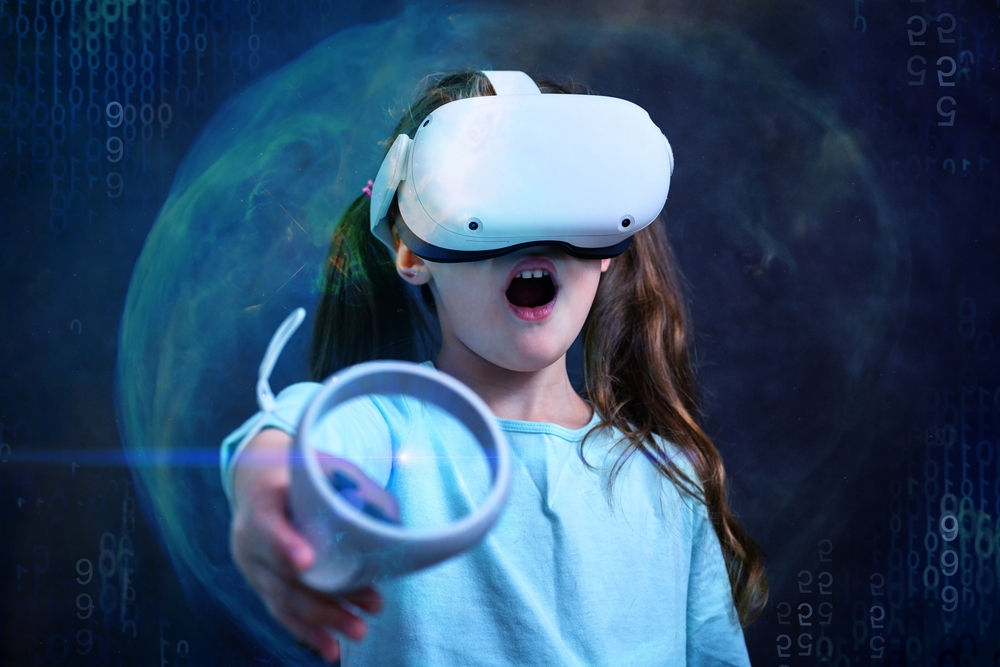Beyond the Game: Charting the Future of Game Data Science
Game data can improve the design, development, and management of games.
March 15, 2023,
Four billion people globally play games and generate enormous amounts of behavioral telemetry data every year.5 Due to the virtual nature of video games, incredibly detailed data about how people play games can be gathered. In addition, it is possible to obtain substantial contextual data through and around games and web clients. This is a far cry from the early days of digital games, when data collection consisted of measures such as coins spent on arcade machines or field observations. Today, game data is diverse, complex, and often very large in scale.4 Jointly, telemetry data and the process of analyzing it to drive decisions in design, development, and business have become a cornerstone of how games are developed, maintained, and generate revenue. However, game data is not just for driving decision-making in companies. Game data is also being used currently to empower creators and players and assist societally beneficial research.
Games are evolving rapidly, taking on new forms, and are increasingly connected with other games and the communities forming around them. Recent technologies such as virtual reality (VR) and augmented reality (AR) are adding novel ways of interacting with game content. New experiences are designed in the space around games, from let’s play streams to analysis videos, data-driven overlays on game broadcasts, online walkthroughs, guides, clans, communities, data services, in-game concerts, virtual meetings, artificial intelligence (AI)–driven training tools, tournaments, VR social spaces, and much more. The cross-reality space that has formed around games — notably in esports — even include games designed to operate in that space, for example, audience games played during esports tournaments. In esports today, you do not need to be a player to enjoy interacting with the esports community or relish experiences being created around the competitive gameplay itself, and there is no reason to expect that this is not also the case in other areas of the games sector. New forms of creation and ways of making a living are appearing in that context as well. Jointly, this makes for an increasingly complex gaming ecosystem. In concert with new data sources opening up and new needs from creators, companies, users, and other stakeholders, new opportunities for game data which aim to improve games themselves but also help to build new services and engagement points are appearing. For example, we are seeing telemetry data being used by esports communities to facilitate content generation or being used by players to build services for each other. Game data can help inform streamers about what to focus on or guide companies on what kind of in-game content to base their merchandise around.
Considering the evolution of games and the spaces they occupy, we can identify a number of trends that are already impacting game data science, how it is applied, and how it generates value and knowledge. These trends point to a largely unexplored potential for the application of game data across individuals, communities, and society.
Compared with many other information technology sectors, the games industry has only a more recent history of sharing data with players and creators. Historically, such data sharing has been unidirectional, from company to players, for instance, through data services in online games intended to assist players. Additionally, behavioral data has been made available through application programming interfaces (APIs), especially for competitive games, which has created an entire data-driven industry in esports.3 This is just the beginning. There is an enormous potential for game companies to utilize telemetry data to expand the touchpoints between games and their context or enable others to do so, as we have seen in esports. Esports and other online games have proven that opening the data pipeline helps to build sustained and dedicated communities who can themselves create new experiences around game-related intellectual property (IP). This, in turn, can increase audience reach, long-term sustainability and revenue, game lifetime, and engagement. The data utilized to inform decision-making in the games industry today does not only rely on behavioral telemetry from live titles. Attributional data from web services, sales information from IP-adjacent merchandise, competitor analytics, community response data, and more provide companies with different ways to gain insight into how their games are played but also about the contextual space they are situated in. In the future, this diversity of game data is expected to increase further.
As noted earlier, the array of experiences being created around game titles is increasingly diverse, which expands the ways that players — and non-players —can engage with the IP. In this, games have evolved in parallel with other areas of the entertainment sector, even seeing creators expanding on the core IP around the games themselves. Thus, the diversity of the experiences being generated — and, therefore, the number of engagement points — is increasing. This includes non-games–related events and experiences such as concerts or meetings taking place in game environments, as has been seen for two decades, and more recently in titles such as Fortnite. In esports, people can engage with these contextual experiences without even playing any games. All of these digital or physical experiences or engagement points created around games result in data about user and customer behavior. As their financial importance increases, so does the need to understand this broader context beyond the game. This is the case not only for game developers but also for the many types of creators who operate directly with a game or its context. This requires rethinking and retooling how to approach more diverse behavioral, experiential, and financial data as well as their analysis, visualization, and communication. This is crucial to meet the expanded needs of a potentially broader user base — including players, all forms of creators, and other audiences. Visualization research that seeks to engage users with the data or combines the processing and analytical power of computers with humans’ perceptual abilities or that takes advantage of recent advancements in AI and machine learning to assist in sense-making of complex data can help ensure access to actionable insights for the different stakeholders involved.4 However, none of this will be possible without strong industry/academia collaboration around data. Guiding the development of these new experiential domains towards fairness, equality, and inclusiveness is crucial. Game analytics can be a powerful driver towards this, for example, in democratizing business intelligence tools for creators.
From the perspective of society, the petabytes of data generated from games give us an unparalleled insight into humanity: what games we like and how we play them; where we are; how we collaborate, communicate, and make choices; and what frustrates us. Such an enormous touchpoint with our lives is rare. Game data can tell us things that other large-scale sources cannot, such as insights into decision-making processes and cognition. It also gives us the ability to drive entirely new forms of societally beneficial research, for example, understanding human behavior at unprecedented scales. However, we have only very recently started considering this potential, not only given the kinds of data that can be explored now but also in a future in which games are more connected to each other as well as their context, whether within walled gardens or not. Early exploratory work is leveraging game data to understand the impact of policies in online technologies, to explore cultures of play, to inform policy, to understand human behavior at a global scale, and to promote health and well-being through gameplay or games.2,5,6
In conclusion, we see enormous potential for the future advancement of game data science. There are clearly obstacles to overcome — game data access and transparency in data collection, empowering collaboration, fairness and equality in who can benefit from data, protecting data and the people they are gathered from, model bias and the technologies we may implement to gain useful insights from them — whether as players, creators, or society.1 With data comes great responsibility with respect to avoiding misuse and protecting the privacy of players. Game data collection has potential unethical applications and needs to be monitored and regulated. We need collaboration across industry, policy makers, and academia to guide policies in this space. Communication is also a key factor that, so far, has shown to be challenging due to the typical large-scale, multivariate, and time-dependent nature of game data.
The motivation for overcoming these obstacles is clear. Across individuals, communities, and society, making data available and building services based on game data has become an important anchor for the future of games and the contexts they operate in.4,5 Game data can improve the design, development, and management of games beyond what is already occurring in the industry today but also unlock new business opportunities around games. This will, in turn, enable new experiences and forms of expression and creation. Finally, game data provides a novel pathway for researching and understanding human behavior. By working together, industry and academia can use the reach and scale of games to positively impact society.
References
- Flick, C. A critical professional ethical analysis of Non-Fungible Tokens (NFTs). Journal of Responsible Technology 12 (2022), 100054.
- Jones, C., Scholes, L., Johnson, D., Katsikitis, M., and Carras, M. Gaming well: Links between video games and flourishing mental health. Frontiers in Psychology 5 (2014), 8.
- Kokkinakis, A.V., Demediuk, S., Nölle, I., Olarewaju, O., Patra, S., Robertson, J., York, P., Chitayat, A.P., Coates, A., Slawson, D., Hughes, P., Hardie, N., Kirman, B., Hook, J., Drachen, A., Ursu Marian F., and Block, F. DAX: Data-driven audience experiences in esports. In ACM Intern. Conf. on Interactive Media Experiences (2020), 94–105.
- Wallner, G. A brief overview of data mining and analytics in games. In Data Analytics Applications in Gaming and Entertainment, Wallner Günter (Ed.). Auerbach Publications, Boca Raton, FL (2019), 1–14.
- Zendle, D., Flick, C., Halgarth, D., Ballou, N., Demediuk, S., and Drachen, A. Transnational patterns in mobile playtime: An analysis of 118 billion hours of human data. (2022); https://osf.io/jqune.
- Zendle, D., Flick, C., Halgarth, D., Ballou, N., Cutting, J., and Drachen, A. Understanding whether lockdowns lead to increases in the heaviness of gaming using massive-scale data telemetry: An analysis of 251 billion hours of playtime. (2022).
Copyright
© 2023 Copyright held by the owner/author(s).
Share this story. Choose your platform.
Want more updates and information from ACM? Sign up for our Newsletter.
Related Articles

The Toxic Cost of Cheap Usernames
Toxicity in video games, acting in a rude, abusive, bullying, or deliberately losing manner, ruins competitive team-based video game experiences for everyone involved.
August 12, 2024,

What Are the Points of Concern for Players about VR Games
In recent years, the VR boom has signaled fruitful applications in fields such as education, industry, animation, and entertainment.
August 22, 2024,

An Empirical Study of VR Head-Mounted Displays Based on VR Games Reviews
In recent years, the VR tech boom has signaled fruitful applications in various fields.
August 22, 2024,

